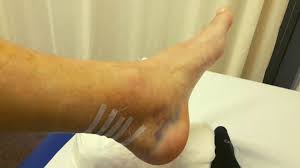
Introduction
Achilles heel surgery becomes necessary when conservative treatments fail to address specific conditions affecting the Achilles tendon and surrounding structures. This article explores common conditions that may require Achilles heel surgery, including Achilles tendon rupture, chronic Achilles tendonitis, and Haglund’s deformity, shedding light on the surgical interventions, preparation, and recovery associated with each condition.
Achilles Tendon Rupture:
Achilles tendon rupture is a severe injury often caused by sudden and forceful movements. Surgery might be recommended for complete ruptures or cases where non-surgical treatments yield inadequate results. The surgical procedure involves reattaching the torn ends of the tendon, promoting proper healing and functional recovery.
Chronic Achilles Tendonitis: Chronic Achilles tendonitis occurs when the tendon becomes inflamed and irritated due to overuse or strain. When conservative treatments like rest, physical therapy, and anti-inflammatory medications prove ineffective, surgical intervention might be considered. Procedures can involve removing damaged tissue, repairing the tendon, or addressing related complications.
Haglund’s Deformity (Pump Bump)
Haglund’s deformity, commonly known as a pump bump, is a bony enlargement at the back of the heel. It often leads to painful bursitis and irritation of the Achilles tendon. Surgical treatment aims to remove the bony prominence, alleviate pressure on the Achilles tendon, and improve overall foot function.
Surgical Interventions
Achilles heel surgery encompasses various techniques tailored to the specific condition. These techniques include open surgery, where an incision is made to access the affected area, and minimally invasive approaches that involve smaller incisions and specialized instruments. Surgical methods are chosen based on the severity of the condition, the patient’s overall health, and the surgeon’s expertise.
Preparing for Surgery
Before undergoing Achilles heel surgery, patients undergo a thorough evaluation to assess their fitness for the procedure. This includes medical history review, physical examinations, and possibly imaging tests. Patients are also educated about the surgery, its potential risks, benefits, and the expected recovery process.
Recovery and Rehabilitation
Recovery from Achilles heel surgery involves a carefully planned rehabilitation process. Patients may need to wear casts, braces, or walking boots initially to protect the surgical site. Physical therapy plays a vital role in restoring strength, flexibility, and functionality to the affected area. Rehabilitation timelines vary based on the procedure performed and the individual’s progress.
Conclusion
Achilles heel surgery becomes necessary when conservative treatments cannot effectively address conditions like Achilles tendon rupture, chronic Achilles tendonitis, and Haglund’s deformity. These surgical interventions are tailored to each condition’s unique requirements, and proper preparation and post-surgery rehabilitation are crucial for achieving successful outcomes. If you’re facing any of these conditions, consulting a medical professional will help determine the best treatment approach for your specific case, promoting optimal healing and restoring your quality of life.